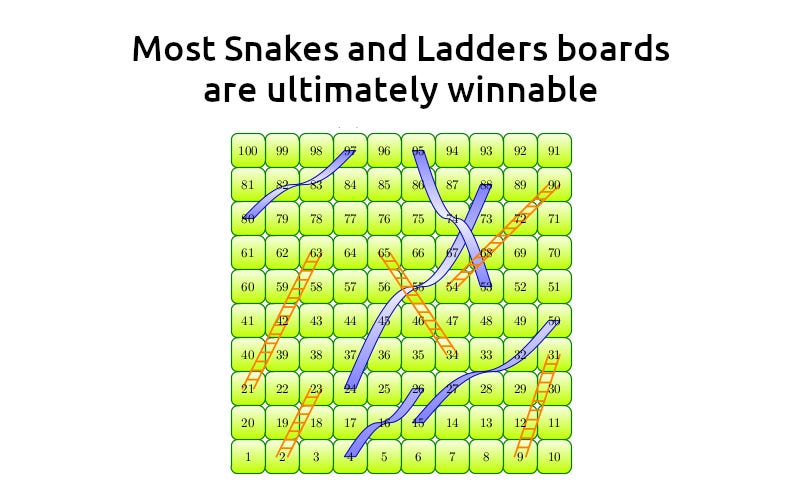Chutes, ladders, and Markov chains
The classic board game of Snakes and Ladders (or Chutes and Ladders) originated almost 2000 years ago in India, where it is known as Moksha Patam (see below). A turn of the game consists of a player throwing a random number between 1 and 6, and advancing a token by that number of squares. If the token ends up at the top of a snake (or chute) then the to…
Keep reading with a 7-day free trial
Subscribe to A Piece of the Pi: mathematics explained to keep reading this post and get 7 days of free access to the full post archives.


